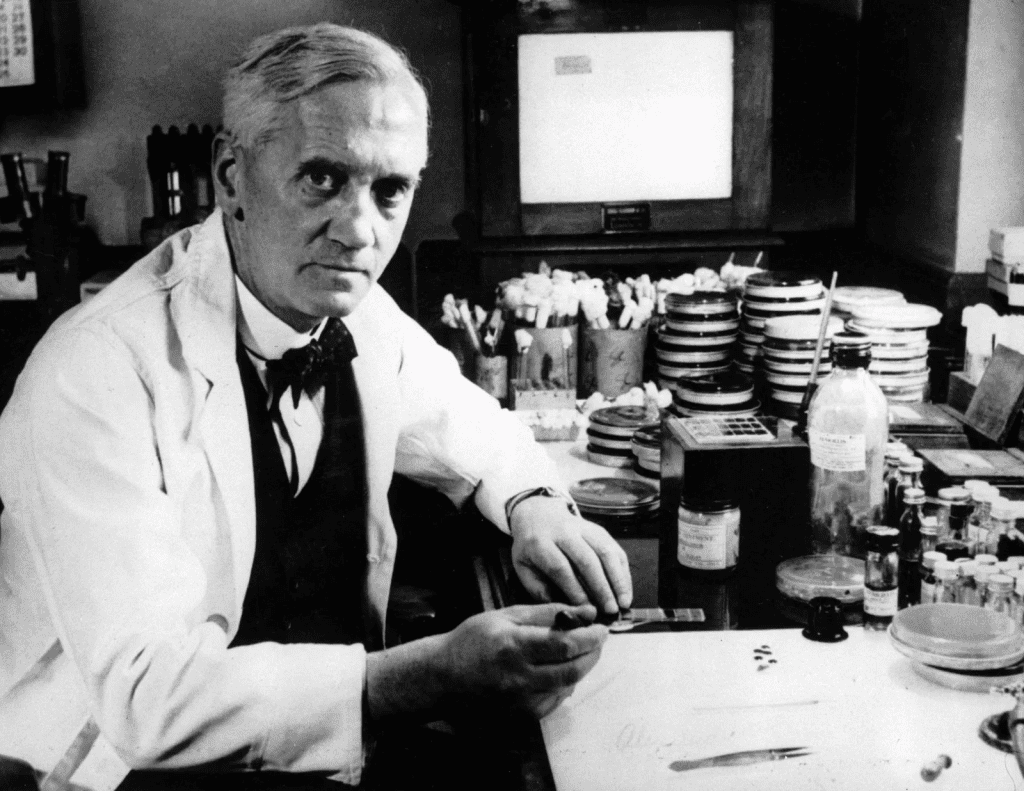Life Before Antibiotics: When Infections Were a Death Sentence
Imagine living in a world where a small scratch or a sore throat could be fatal. That was the harsh reality before the discovery of antibiotics. Minor cuts, burns, or even dental procedures could lead to deadly bacterial infections. Diseases like pneumonia, tuberculosis, and strep throat claimed millions of lives because medicine simply had no effective way to fight the bacteria causing them.
In those days, doctors did their best with antiseptics, rest, and hope. But for many, infections meant a slow and painful decline. This was the medical landscape until one curious scientist noticed something unexpected on a Petri dish.

The Accidental Breakthrough by Alexander Fleming
In 1928, Scottish bacteriologist Alexander Fleming was working at St. Mary’s Hospital in London. He was studying staphylococcus bacteria when he made a surprising observation. After returning from a short vacation, Fleming noticed that a mold had grown on one of his culture plates. What caught his attention was not just the mold itself, but the clear area surrounding it. The mold seemed to be killing the bacteria nearby.
Video:
The accident that changed the world – Allison Ramsey and Mary Staicu
This mold turned out to be Penicillium notatum. Fleming identified that it released a substance capable of killing a wide range of bacteria. He named this substance penicillin. Fleming quickly realized its potential and published his findings in 1929. However, at the time, he lacked the technology and support to isolate and mass-produce it effectively.
Bringing Penicillin to the World
It took over a decade for penicillin to move from an interesting lab finding to a practical treatment. In the late 1930s and early 1940s, a team of scientists at Oxford University most notably Howard Florey, Ernst Boris Chain, and Norman Heatley took up the challenge of purifying and producing penicillin in usable quantities.

Their work gained urgency during World War II. Wounded soldiers often died from infections that set in after injuries. Penicillin offered a revolutionary solution. With the support of governments and pharmaceutical companies in the United States and the United Kingdom, mass production began. By the time of the D-Day invasion in 1944, enough penicillin was available to treat Allied troops, saving thousands of lives.
A New Era in Medicine Begins
The success of penicillin marked the start of the antibiotic era. For the first time in history, doctors had a reliable tool to fight bacterial infections. It transformed healthcare in ways few could have imagined. Diseases that once led to death became manageable. Hospitals became safer, surgeries more routine, and childbirth significantly less risky.
Video:
Penicillin: From Fleming to the Pharmacy
Penicillin’s impact extended beyond the battlefield. It paved the way for the discovery of other antibiotics like streptomycin and tetracycline. Entire fields of medical research grew out of this one accidental discovery. Public health improved dramatically. Life expectancy increased. The world was never the same.
Fleming’s Warning and the Challenge Ahead
While penicillin saved millions, Alexander Fleming also issued a warning that remains relevant today. In his Nobel Prize acceptance speech in 1945, he cautioned that misuse of antibiotics could lead to resistance. Over time, bacteria could evolve to survive treatment, rendering antibiotics less effective.
Today, we face this exact challenge. Antibiotic resistance is on the rise due to overprescription, misuse, and the use of antibiotics in agriculture. What was once a miracle drug now serves as a reminder that scientific breakthroughs must be used responsibly.

The Legacy of Penicillin
Penicillin is more than just a medicine. It symbolizes the power of curiosity, persistence, and collaboration. Fleming’s accidental observation, combined with the determination of researchers during wartime, changed the course of medical history.
Though Fleming initially received little recognition, he, along with Florey and Chain, was eventually awarded the Nobel Prize in Physiology or Medicine. Today, penicillin stands as one of the greatest discoveries of the 20th century, a testament to how science can save lives and alter the future.

Conclusion: A Mold That Made History
From an unnoticed speck of mold on a forgotten Petri dish to a global lifesaving treatment, the story of penicillin is nothing short of extraordinary. It reminds us that even the smallest discoveries can have world-changing consequences. In a time when the world needed hope, penicillin delivered. And nearly a century later, its legacy continues to shape how we treat infections and understand the power of medical science.


